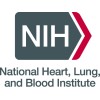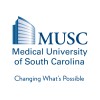
Non Invasive Assessment of Liver Fibrosis in Fatty Liver Disease
Non Alcoholic Fatty Liver DiseaseThe purpose of this randomized clinical trial is to evaluate the utility of noninvasive markers for the detection of advanced fibrosis in patients newly diagnosed with Non-alcoholic Fatty Liver Disease (NAFLD) by ultrasound. The primary objective is to determine the effectiveness of noninvasive markers for detect of advanced fibrosis in patients with diagnosis of fatty liver disease. The secondary objectives are: To determine the increase in health care with the specialist (gastroenterologist or endocrinologist). To determine which noninvasive evaluation strategy favors any treatment of fatty liver disease.

Preventive Effect of Enoxaparin, Pentoxifylline and Ursodeoxycholic Acid to Radiation Induced Liver...
Colorectal CancerLiver Metastases2 moreTo evaluate whether a combination regimen of pentoxifylline, ursodeoxycholic acid and enoxaparin provides a protective effect on the liver parenchyma after high dose rate (HDR) brachytherapy.

Hepatitis B Vaccine Clinical Trial
Hepatitis BHepatitis3 moreTo determine the efficacy of a hepatitis vaccine in preventing hepatitis B.

Beyond Confounders: Addressing Source of Measurement Variability and Error in Shear Wave Elastography...
Liver FibrosisLiver DiseasesChronic liver disease is a major problem in the general population and there is an unmet need to diagnose(and screen) for liver disease with using noninvasive, cost-effective and sensitive techniques.The investigators hypothesize that variation using ultrasound elastography for the estimation of stage of liver fibrosis and steatosis in patients with diffuse liver disease exists due to different methods of measurements, and/or different systems. The proposed investigation is a cross-sectional study using ultrasound elastography and fat quantification modalities. The investigators are planning to enroll 30 subjects 18 years old and older in whom diffuse liver disease is suspected, and who have undergone non-focal liver biopsy in the past 6 months or are scheduled to undergo biopsy within 3 months of enrollment, as part of their routine clinical care. The investigators will use 4 different ultrasound devices with their shear wave elastography and speed of sound functions. Specific aims; Compare shear wave elastography(SWE) measurements from different ultrasound systems; using histopathology as reference standards. Assess intra-operator and inter-operator reliability by measuring variability in elastography values by two operators on a single system. Determine the effect of deviations from guidelines(less number of measurements and measurements during active breath)

Proof of Concept Study Concerning Efficacy of P03277 MR Imaging in HCC Diagnosis
Chronic Liver DiseaseHepatoCellular CarcinomaThis study is an exploratory study aiming to collect data about diagnosis efficacy (sensitivity and specificity) of P03277 triphasic liver imaging for HCC in subjects with suspected small nodules and chronic liver disease. 30 subjects will be included, having HCC confirmed or not by previous enhanced CT and/or MRI and before any biopsy for histology analysis. The standard of reference for diagnosis will be given by the site according to their standard of care and adapted from EASL/EORTC diagnostic criteria (considering previous contrast enhanced imaging (CT and/or MRI) and/or biopsy specimen analysis given on-site and/or the more recent AFP results available). 10 additional subjects will be included to explore the diagnostic efficacy for HCC at half dose of P03277.

Comparison and Outcomes of Endoscopic Ultrasound Liver Biopsies Versus Percutaneous Liver Biopsies...
Chronic Liver DiseaseHistopathological examination of liver tissue is used to determine the etiology and extent of liver disease. In order for a clinician to make a better-informed decision regarding a patient with liver disease, the liver biopsy specimen has to be adequate and of high quality for pathological interpretation. It is generally agreed that an adequate liver biopsy has to have ≥6-12 intact portal tracts for pathological review and interpretation.(1) Historically, three approaches have been used to obtain a liver biopsy: percutaneous, transjugular (TJ-LB) and laparoscopic approach (LA-LB)- with percutaneous liver biopsy (P-LB) being the most commonly employed. Endoscopic ultrasound-guided liver biopsy (EUS-LB), a newer approach, is now being performed by select skilled endoscopists across the country. EUS-LB is advantageous over existing techniques because it enables visualization and avoidance of vessels that are 1mm in diameter, provides access to both lobes of the liver and theoretically is less painful due to avoiding somatic pain fibers. Further, in patients that are already undergoing esophagogastroduodenoscopy, EUS-LB can be performed simultaneously and spare the patient an additional procedure. Because of the plausibility of reduced pain, number of procedures and possibly complications, EUS-LB may be cost-effective over existing methods. There is limited data evaluating the safety and efficacy of EUS-LB versus percutaneous liver biopsy. The investigators hope to provide answers in a prospective study comparing between patients, who are already undergoing liver biopsy, randomly assigned to either EUS-LB or P-LB. The investigators will compare outcomes such as pain, bleeding, hospitalization, and tissue diagnosis between the two groups. This will allow us to add to the existing data for the use of EUS-LB. If patients are found to have less adverse events and better outcomes using EUS-LB versus percutaneous-LB this may become the preferred method of diagnosis in this patient population.

Pre-emptive Transjugular Intrahepatic Portosystemic Shunt (TIPS) in Cystic Fibrosis Related Liver...
Cystic Fibrosis Liver DiseasePortal Hypertension Due to Cystic Fibrosis (Disorder)2 morePortal hypertension (PHT) and its sequelae are the most clinically important manifestation in cystic fibrosis related liver disease (CFLD), with end-stage liver failure as a late and rare manifestation. The aim is to evaluate the safety and efficacy of a pre-emptive Transjugular Intrahepatic Portosystemic Shunt (TIPS) for the prophylaxis of variceal bleeding in pediatric CFLD patients with subclinical non-cirrhotic portal hypertension (NCPH)

Minocycline Administration During Human Liver Transplantation
Liver DiseaseLiver transplantation is the sole therapy for end-stage liver diseases and acute liver failure in children and adults. However, use of this life-saving technique is limited due to a severe shortage of donor livers. The number of transplants currently performed is approximately one-third of the number needed to accommodate the more than 16,000 patients awaiting an organ in the US. Over 20% of patients on the liver transplant waiting list die prior to transplantation due to organ shortages. The median waiting time in 2011 was over 300 days. Poor immediate graft function and primary non function (PNF) are clinically significant events, especially in recipients of marginal livers (elderly donors, extended cold storage time, or steatosis). PNF has dramatic effects on patient morbidity and mortality, necessitating prolonged and expensive stays in intensive care units, and re-transplantation is the only life-saving therapy in patients with failing liver grafts due to PNF. This further exerts greater burden on the already scarce donor organ pool. Furthermore, biliary strictures and ischemic cholangiopathy, as a result of severe ischemia reperfusion injury, cause prolonged hospital stay, long-term complications, and increased costs. Targeted treatments, such as the one proposed in this application, will reduce the need for re-transplantation, reduce biliary injury, and potentially increase the number of donor organs available.

Dual Hypothermic Oxygenated Perfusion of DCD Liver Grafts in Preventing Biliary Complications After...
Liver FailureEnd Stage Liver Disease1 moreRationale: Recent publications report good results of controlled donation after circulatory death (DCD) Maastricht category III liver transplantation when strict donor-recipient matching is applied and ischemia times are kept to a minimum. However a major concern remains the high rate of biliary complications after transplantation of DCD livers. Non-anastomotic biliary strictures (NAS) occur in 29% of patients receiving a DCD graft whereas the incidence of NAS in recipients of donation after brain death (DBD) liver grafts is 11%. NAS are associated with higher morbidity and increased cost of liver transplantation. Injury to the biliary epithelium and the peribiliary vascular plexus occurring during donor warm ischemia and static cold storage (SCS) has been identified as a major risk factor for development of NAS. Machine perfusion has been proposed as an alternative strategy for organ preservation, offering the opportunity to improve the quality of the organ by providing oxygen to the graft. Experimental studies have shown that end-ischemic dual hypothermic oxygenated machine perfusion (DHOPE) helps liver grafts to recover from ischemia by restoring mitochondrial function. Moreover, DHOPE has been shown to provide better preservation of peribiliary vascular plexus of the bile ducts, which could be an important step forward in reducing the incidence of NAS after transplantation. Objective: To study the efficacy of end-ischemic DHOPE in reducing the incidence of NAS within six months after controlled DCD (Maastricht category III) liver transplantation. Study design: An international, multicenter, prospective, randomized, controlled, interventional, clinical trial with a two parallel arm approach (treatment/control). Study population: Adult patients (≥18 yrs old) undergoing a liver transplantation with a liver graft procured from a controlled DCD donor (Maastricht category III) with a body weight ≥40 kg. Intervention: In the intervention group liver grafts will be subjected to two hours of hypothermic, oxygenated perfusion at the end of SCS and before implantation. In the control group donor liver grafts will be preserved in accordance to standard practice by SCS only. Main study parameters/endpoints: The incidence and severity of symptomatic NAS as diagnosed by an Adjudication committee (who are blinded for the group assignment) by means of magnetic resonance cholangiopancreatography (MRCP).

Nonalcoholic Fatty Liver Disease and Atherosclerotic Risk in Children
Overweight and ObesityNon-alcoholic Fatty Liver DiseaseNonalcoholic fatty liver disease is a serious health condition in overweight children which can lead to heart disease. This project will examine the links between liver health and cardiovascular risk factors in overweight and obese children, and will test the effect of a long-term after-school exercise program. Provision of comprehensive evidence for the benefits of exercise on children's health may reduce barriers to vigorous physical activity programs during a childhood obesity epidemic.
